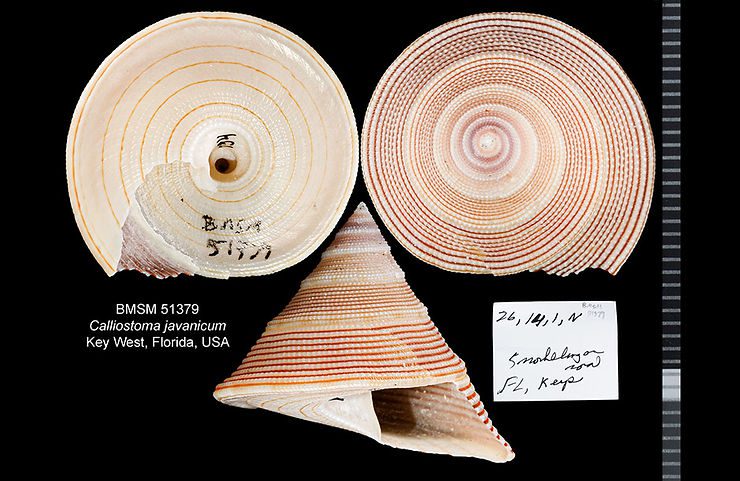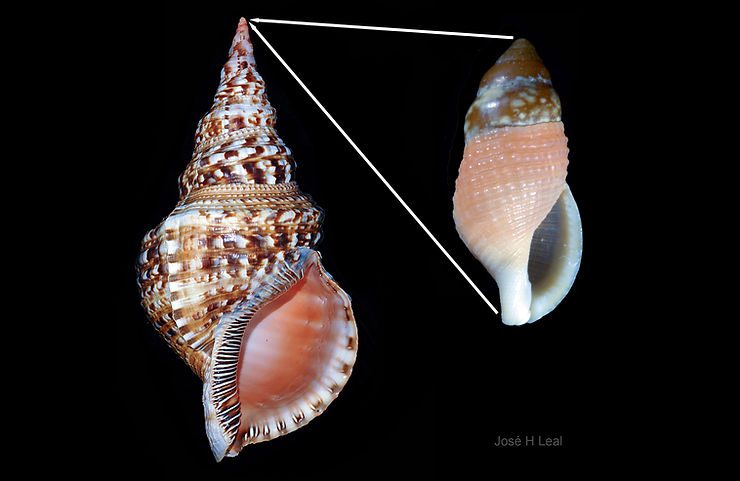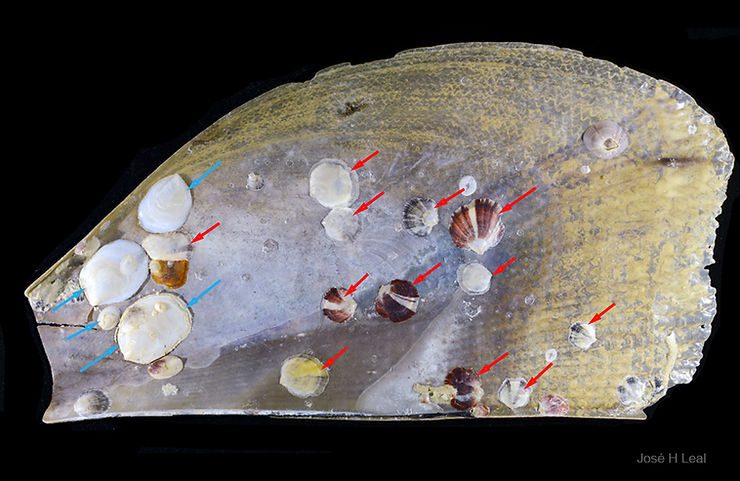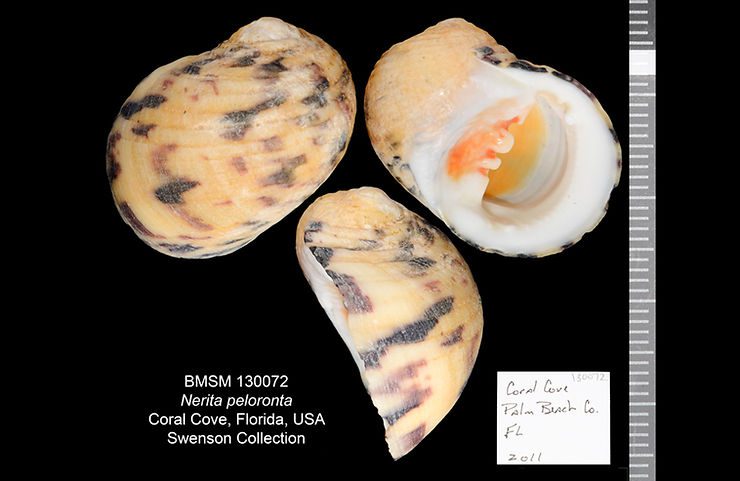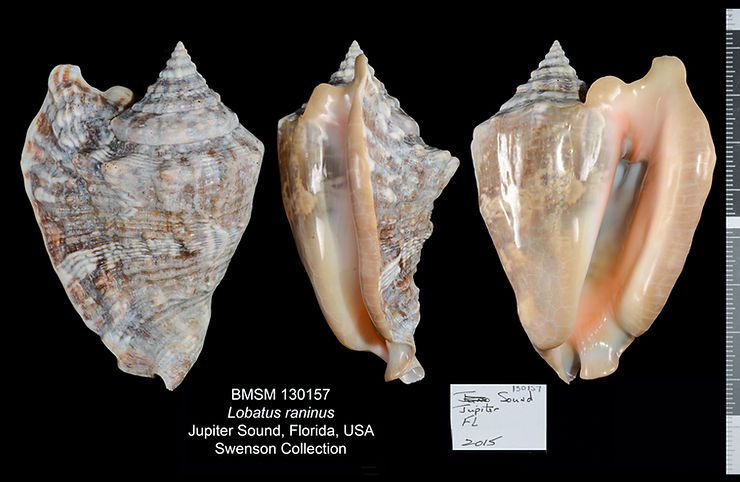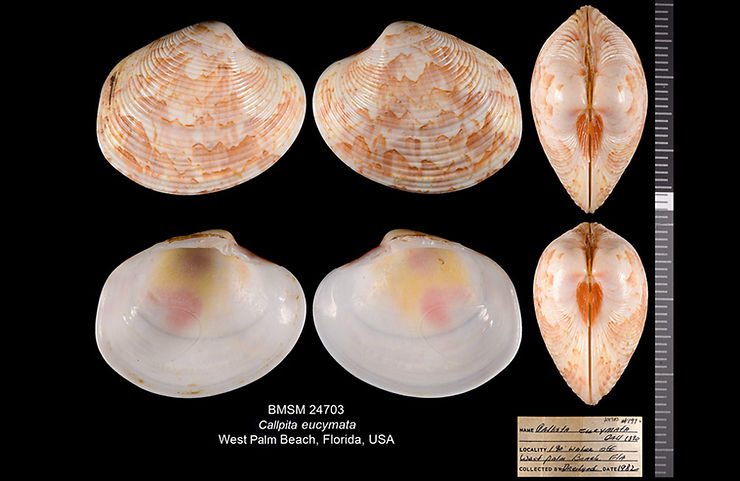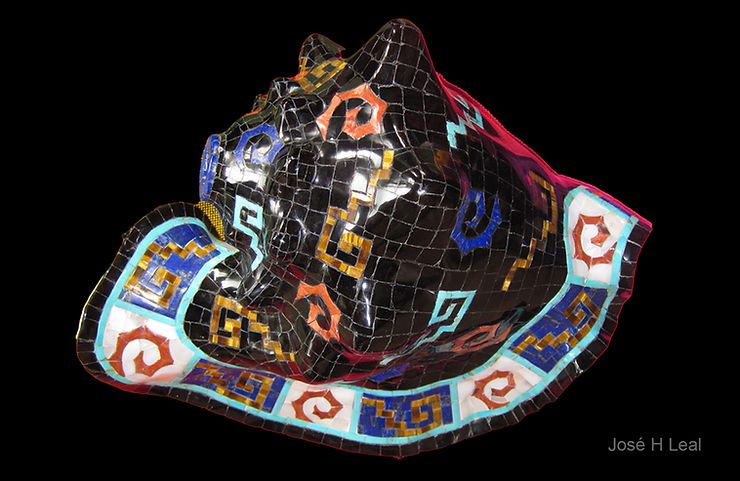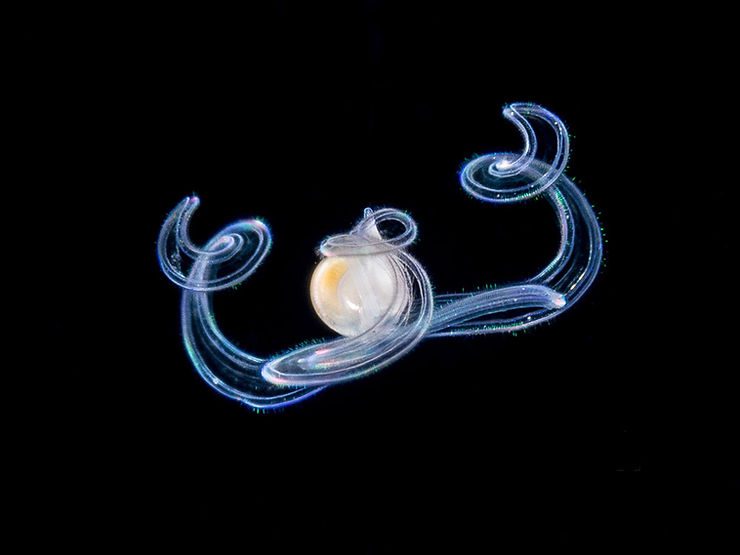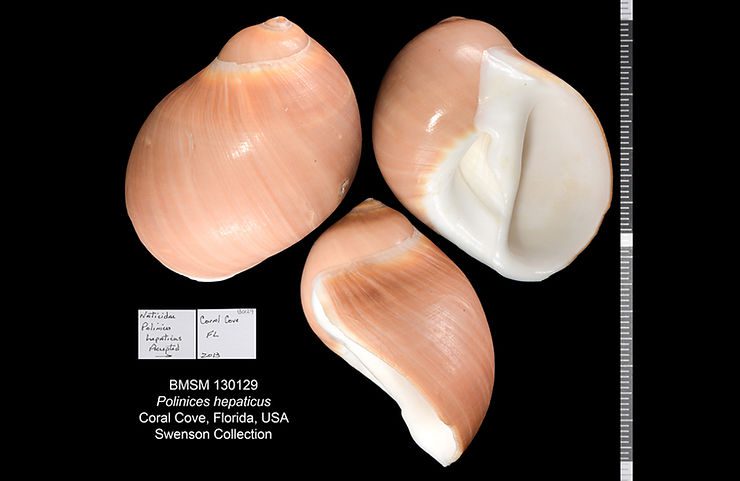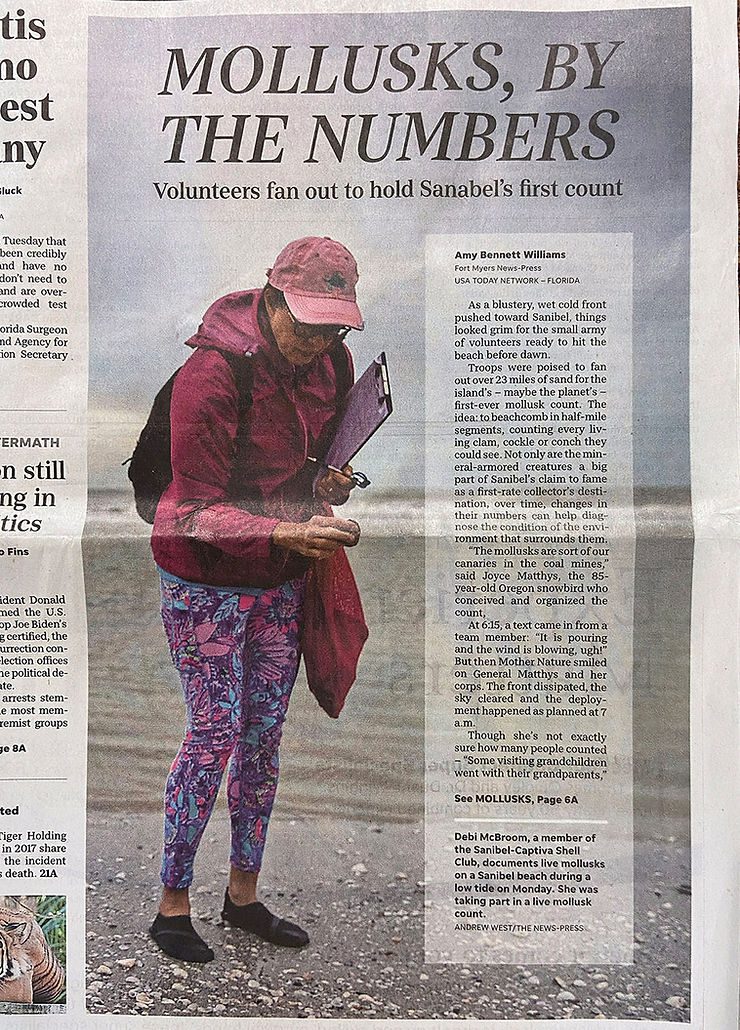
Mollusks in the Local News!
Once again, mollusks made the front cover of the local (Fort Myers, Florida) News Press. Thanks to an extraordinary effort from the Sanibel Captiva Shell Club and its members, and under the serene leadership of Joyce Matthys, the first, local live-mollusks count took place on Sanibel, on Monday, January 3, during an early-day, very low, low tide! About 50 shell club members and friends participated, the National Shell Museum provided identification of less common species, and will be cooperating
